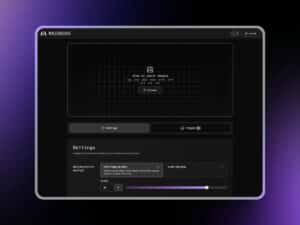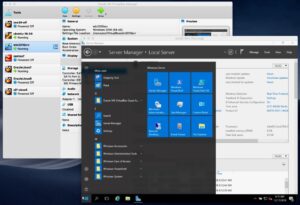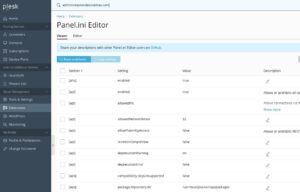SUSE Linux Enterprise Server 16 (SLES 16) is now official and arrives as a new foundation for the next decade of enterprise IT. This isn’t a routine service pack: it changes core system pieces, brings agentic AI hooks into the OS itself, hardens security by default, and reshapes the lifecycle to offer up to 16 years of support through annual minor releases and LTS extensions. The goal is clear: immediate innovation without giving up long-term stability.
What’s new in the core of the system
SLES 16 broadly refreshes the platform: Linux kernel 6.12 LTS, glibc 2.40, and systemd 257, among other components. On top of that, SUSE introduces Agama as the next-gen installer (more modular, better hardware detection, and a visual partitioning workflow) and Cockpit as the web administration interface for manual tasks (taking over the role traditionally covered by YaST in this area). For operations and automation, the distro includes Ansible with standardized roles (firewall, ha_cluster, SELinux, podman…), while keeping Salt compatibility through SUSE Multi-Linux Manager.
On the filesystem front, SLES 16 doubles down on Btrfs + Snapper and takes snapshots/rollbacks further: instant rollback of almost any change (from a patch to a full upgrade), enabled by default on cloud images, bringing OS-level recovery closer to day-to-day admin work.
Security: SELinux enforcing, reproducible builds, and post-quantum crypto
The most visible change: SELinux replaces AppArmor and ships in enforcing mode by default, with 400+ policy modules ready from the first boot. This aligns SLES with the dominant standard for high-assurance environments (defense, finance, telco) and enables finer confinement of processes and containers.
Another pillar is verifiability. SLES 16 is presented as the first enterprise distro built entirely with reproducible builds: customers can verify (and even rebuild) binaries from source, complemented by full SBOMs. This strengthens audits, supply-chain integrity, and compliance.
Looking ahead, SUSE introduces post-quantum cryptography (PQC) across core libraries (e.g., OpenSSL 3.5, Libgcrypt, NSS), with algorithms such as ML-KEM and ML-DSA to counter “harvest-now, decrypt-later” risk. Adoption will be gradual, but it sets the long-term security direction.
Built-in AI: MCP and assisted administration from the OS
The strategic headline is that SUSE brings agentic AI into the operating system. SLES 16 includes (as a Technology Preview) an MCP host (Model Context Protocol) to connect models with enterprise tools and data sources under an open standard—no vendor lock-in. On that foundation, SUSE is outlining AI-assisted administration with a natural-language interface and a human-in-the-loop posture: accelerate troubleshooting, apply playbooks, and cut operational toil while keeping policies in control.
For SAP, edge, and cloud-native teams, SUSE signals this integrated AI infrastructure will extend into tools such as Multi-Linux Manager, Trento, and cloud-native solutions—always led by openness + governance.
Operational and administrative changes to note
- Network names: adoption of systemd’s predictable interface names; for complex setups, use systemd.link.
- Mounts: util-linux switches to the kernel’s mountfd API (new capabilities and a few minor incompatibilities).
- Root over SSH: on fresh installs, password login for root is disabled; provide an SSH key if you need remote root access.
- Volatile /tmp: now tmpfs by default.
- Python: /usr/bin/python3 → 3.13 today, with a coexistence strategy for future interpreter updates.
- No 32-bit: SLES 16 drops 32-bit binaries (and 31-bit on IBM Z).
- NFS over TLS: now supported for storage traffic.
Notable removals and deprecations
- Xorg is out (compat via XWayland).
- Xen as a host is removed (KVM is the supported path); running as a Xen HVM/PVH guest remains possible.
- SysV init.d support: removed.
- YaST is no longer the default manual admin tool for day-to-day tasks (that role shifts to Cockpit).
Lifecycle: annual minors and a runway through 2038
With SLES 16, SUSE adopts a more predictable cadence: annual minor releases (16.1, 16.2, …) every November, each with 2 years of general support extendable to 5 with LTS. Chaining those minors and LTS windows across the 16 family yields a total commitment up to 2038 (~16 years), among the longest in the industry. Following the yearly rhythm helps minimize disruption and avoid big-bang upgrades.
Technical take: why it matters (beyond the release notes)
- Verifiable security: move from “trust because it’s signed” to “trust because you can reproduce and verify.” For regulated sectors, this trims audit time and strengthens supply-chain posture.
- Closing the ops–AI gap: bringing MCP into the OS enables AI-assisted ops (diagnosis, remediation, guided change) without sending sensitive data to external SaaS.
- Hardening by default: SELinux enforcing with broad policies means a confined system out of the box; less baseline work for security teams.
- Long lifecycle with annual minors: aligns continuous modernization with workloads that need controlled change windows.
Who will benefit most
- SAP, mission-critical, and telco environments that value high uptime (kernel/userspace live patching), instant rollbacks, and aggressive hardening.
- Platform teams seeking end-to-end governance and traceability (SBOM, reproducibility, SELinux) and declarative operations (Ansible included).
- Organizations with data-sovereignty policies that want agentic AI without exfiltration: governed RAG + MCP on their own infrastructure.
Frequently Asked Questions
Is SUSE “dropping” AppArmor?
In SLES 16, SELinux becomes the default (enforcing). AppArmor can still be used elsewhere, but SLES 16’s enterprise stance is SELinux for broader adoption and finer granularity.
Is the built-in AI GA?
The MCP host and agentic AI plumbing debut as a Technology Preview in 16.0. The roadmap points to expanding capabilities and supported products across the 16.x line.
Can I really “rebuild” the binaries?
Yes. SLES 16 adopts reproducible builds across the enterprise distribution. You can verify a binary matches published source and rebuild it in your environment while keeping official support.
How does the 16-year support actually work?
Each minor (16.0, 16.1, …) gets 2 years of general support, extendable to 5 with LTS. With yearly minors and their LTS windows chained, the 16 family runs through 2038. The recommendation is to track the annual cadence to capture the full window and avoid disruptive jumps.
Sources: documentation.suse y suse











